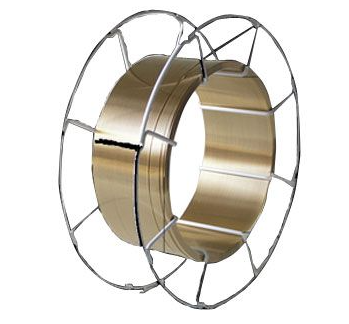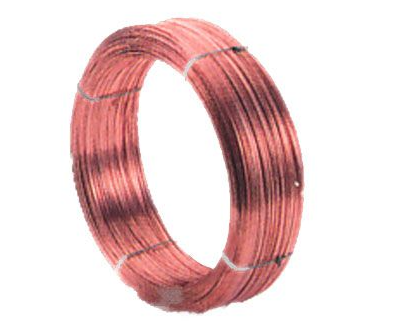Copper alloys are widely used in various industries due to their unique properties such as high conductivity, corrosion resistance, and ease of fabrication. These alloys, which are combinations of copper and other metals like zinc, tin, aluminum, and nickel, offer improved strength, hardness, and other desirable characteristics for specific applications. In this guide, we will explore the different types of copper alloys, their uses, and why they are so important in modern technology and manufacturing.
1. What Are Copper Alloys?
A copper alloy is a material that consists primarily of copper mixed with one or more additional metals. These alloys are engineered to enhance the properties of pure copper, making them more suitable for specific applications. Copper alloys generally provide greater strength, improved resistance to wear, and increased corrosion resistance compared to pure copper.
The main types of copper alloys include:
Bronze: An alloy of copper and tin, often with other elements like phosphorus or aluminum.
Brass: An alloy of copper and zinc, often used in decorative and electrical applications.
Nickel Silver: A copper-nickel-zinc alloy used for its attractive appearance and resistance to corrosion.
Copper-Nickel Alloys: Known for their excellent resistance to corrosion, particularly in marine environments.
Copper-Aluminum Alloys: Combining copper with aluminum to enhance strength and corrosion resistance.

ERCuNiAl
2. Types of Copper Alloys and Their Uses
Each type of copper alloy is designed to meet specific performance needs in different industries. Below are some of the most widely used copper alloys and their applications:
Bronze
Bronze is one of the oldest and most widely used copper alloys. It is primarily made by combining copper and tin, but it can also include small amounts of other elements like phosphorus, aluminum, or manganese to improve specific properties. Bronze is highly resistant to corrosion, wear, and fatigue, making it ideal for use in harsh environments.
Applications of bronze include:
Marine hardware (boat propellers, rudders, and seawater pumps)
Aerospace components
Electrical connectors and terminals
Art statues and decorative items
Brass
Brass is a copper-zinc alloy that offers excellent machinability, high strength, and good corrosion resistance. It is often used for its aesthetic appeal, as it has a gold-like appearance. The proportion of zinc in brass can be varied to create different grades of brass, each with specific characteristics.
Brass is used in a variety of industries, including:
Plumbing fixtures (faucets, valves, and pipes)
Musical instruments (trumpets, saxophones, and cymbals)
Electrical connectors and terminals
Coins and decorative items
Nickel Silver
Nickel silver, also known as German silver, is an alloy of copper, nickel, and zinc. It does not actually contain silver but has a silvery appearance due to the nickel content. Nickel silver alloys are valued for their corrosion resistance, aesthetic appeal, and ease of fabrication.
Common uses of nickel silver include:
Copper-Nickel Alloys
Copper-nickel alloys are known for their outstanding resistance to corrosion, particularly in seawater. These alloys typically consist of 90% copper and 10% nickel, but the ratio can vary. They are used in environments where resistance to corrosion is critical.
Applications of copper-nickel alloys include:
Copper-Aluminum Alloys
Copper-aluminum alloys combine the corrosion resistance of copper with the strength and lightweight properties of aluminum. These alloys are often used in applications requiring strength and durability but where weight is a consideration.
Typical applications for copper-aluminum alloys include:
Aerospace components
Automotive parts (engine blocks, radiators)
Marine equipment (piping, heat exchangers)
3. Benefits of Copper Alloys
Copper alloys offer a range of benefits that make them valuable in many industries. Here are some of the key advantages:
Corrosion Resistance: Copper alloys, such as bronze and copper-nickel, provide excellent resistance to corrosion, particularly in harsh environments like marine and industrial settings.
Strength and Durability: Copper alloys such as brass and bronze are stronger than pure copper, making them suitable for heavy-duty applications and structural components.
Electrical Conductivity: Copper and its alloys, particularly brass and bronze, maintain high electrical conductivity, making them ideal for use in electrical connectors and wiring.
Easy Fabrication: Many copper alloys are easy to fabricate, which allows for precise machining, casting, and forming into complex shapes.
Aesthetic Appeal: Alloys like brass and nickel silver are popular for decorative applications due to their attractive golden or silvery appearance.

ERCu
4. Choosing the Right Copper Alloy
When selecting a copper alloy for a specific application, it is important to consider factors such as strength requirements, environmental conditions, electrical conductivity, and aesthetic preferences. Here are some factors to keep in mind:
Strength and Hardness: For applications requiring high strength, such as machinery or structural components, alloys like bronze or copper-aluminum may be suitable.
Corrosion Resistance: If the alloy will be exposed to harsh conditions like seawater or chemicals, alloys such as copper-nickel or bronze are ideal due to their superior corrosion resistance.
Electrical Conductivity: If the primary concern is electrical performance, copper and its alloys with low resistance, like brass and bronze, are commonly used in electrical applications.
Appearance: For decorative items or products where aesthetics are important, alloys like brass and nickel silver are often the best choices due to their attractive color and finish.
Frequently Asked Questions (FAQs)
1. What is the most common copper alloy?
The most common copper alloys are brass and bronze. Brass, an alloy of copper and zinc, is widely used for its strength, ease of fabrication, and aesthetic qualities. Bronze, made primarily of copper and tin, is prized for its corrosion resistance and durability, especially in marine environments.
2. Can copper alloys be recycled?
Yes, copper alloys are highly recyclable. In fact, copper is one of the most recycled metals in the world. Recycling copper alloys helps conserve natural resources, reduce energy consumption, and minimize environmental impact.
3. How are copper alloys made?
Copper alloys are made by melting copper and adding one or more alloying metals, such as zinc, tin, nickel, or aluminum, to form the desired composition. The molten alloy is then poured into molds or cast into shapes for further processing, such as rolling, forging, or extrusion.
4. What is the difference between bronze and brass?
Bronze is primarily composed of copper and tin, whereas brass is made of copper and zinc. Bronze tends to have a more reddish-brown color and is known for its resistance to corrosion, especially in marine environments. Brass, on the other hand, has a yellow-gold color and is commonly used for decorative purposes and applications requiring machinability.
5. Are copper alloys better than pure copper?
Yes, copper alloys are often better than pure copper in specific applications. While pure copper has excellent electrical conductivity, copper alloys like bronze and brass offer enhanced strength, corrosion resistance, and other properties that make them suitable for a wide range of industrial, marine, and decorative applications.
In conclusion, copper alloys are essential materials with a wide range of applications due to their excellent properties such as strength, corrosion resistance, and electrical conductivity. By understanding the different types of copper alloys and their uses, you can make an informed choice about which
alloy is best for your needs.







